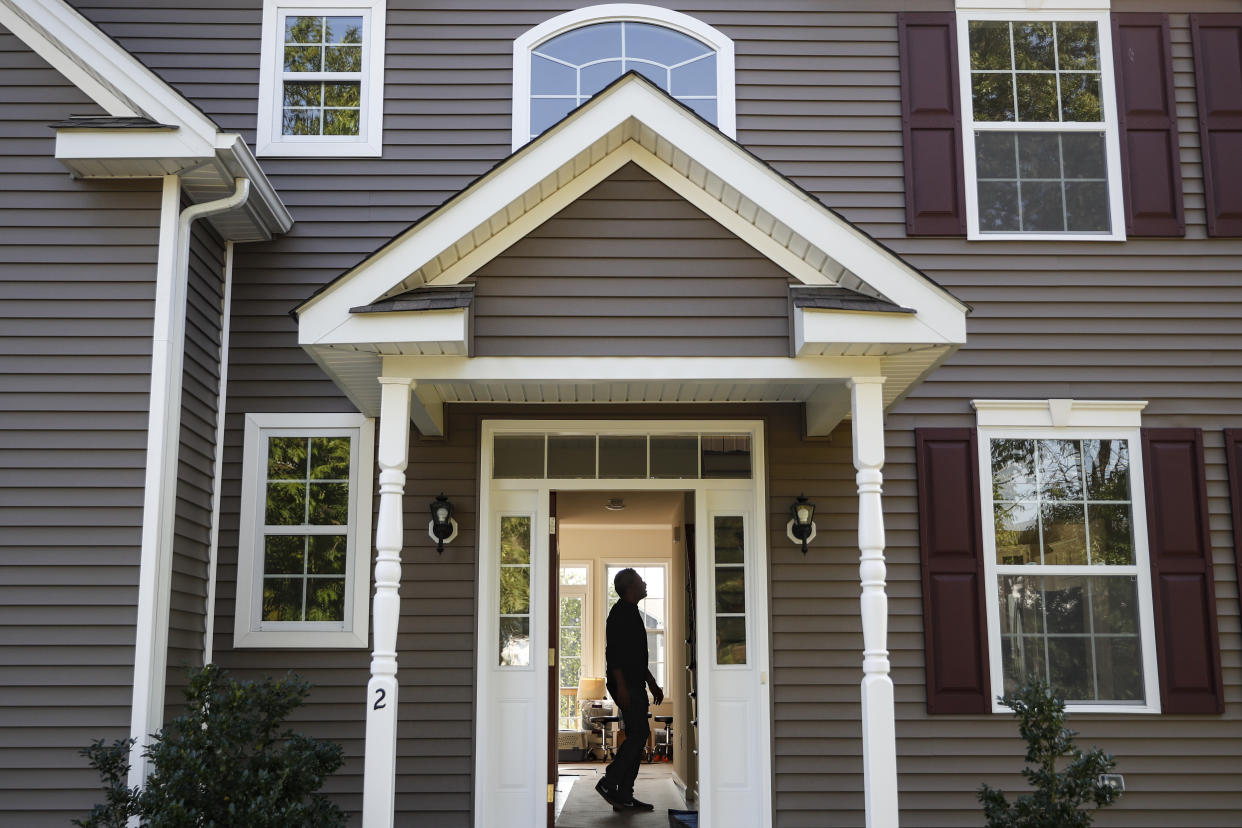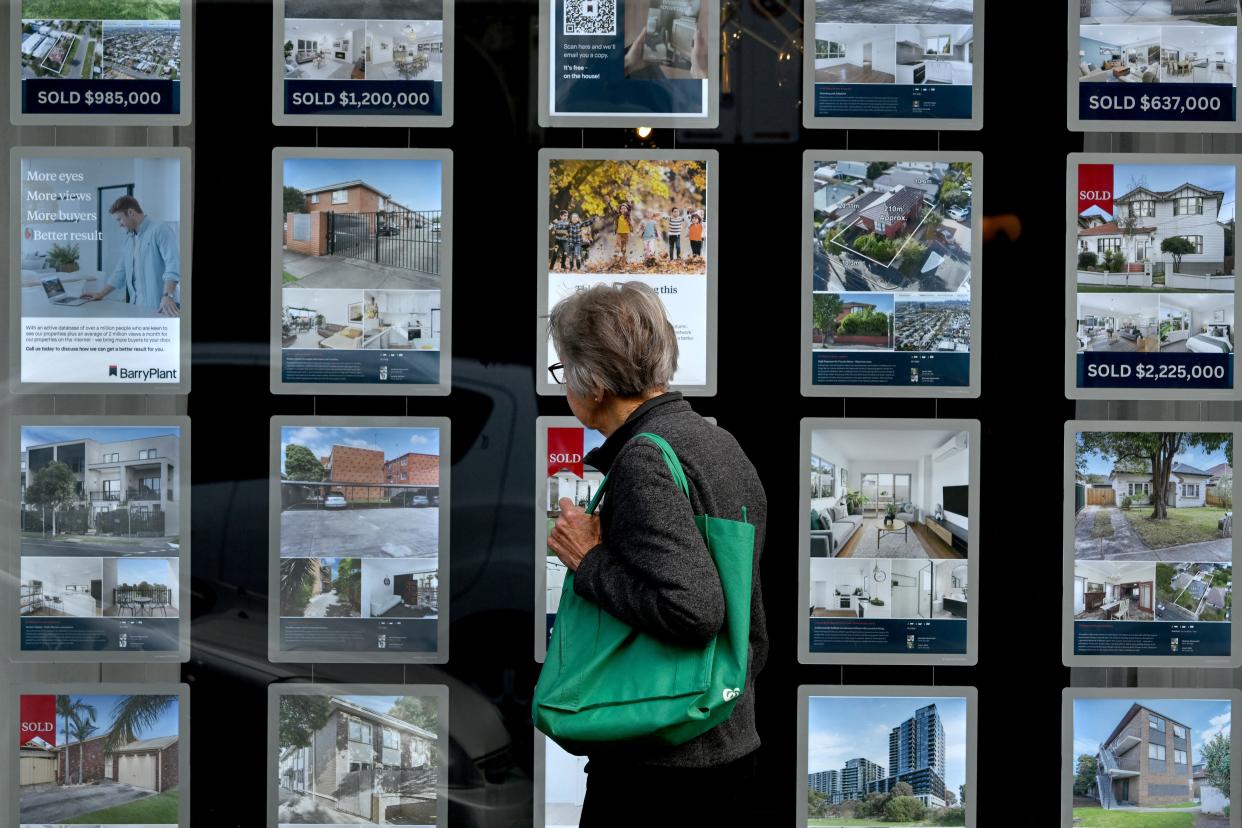Americans need a six-figure salary to afford a new home in most cities
Looking to buy a home? If so, bad news from Redfin. According to the real estate firm's latest survey, home shoppers need to earn 50% more than they did prior to the pandemic to afford a typical US home in today's market.
Nationally, buyers had to earn an average of $114,627 (before taxes and adjusted for inflation) to afford a median-priced US home in August 2023, per Redfin. That’s up 15% ($15,285) from a year ago, and is 50% more than the $72,511 income required to purchase a home in August 2019. The figure marks the highest annual income necessary to afford a home on record dating back to 2012, Redfin found.
That's a steep climb for some, considering that the average American household earned about $75,000 annually in 2022. According to the the Federal Reserve Bank of Atlanta, hourly wages have only climbed about 5% within the past year.
The data underscores how unaffordable the housing market has become over the last four years, with steep home prices and mortgage rates far outpacing wage growth and leaving more and more entry-level buyers priced out.
Read more: How to buy a house in 2023
"Because mortgage rates were low, it was becoming cheaper to borrow to buy a home and that was keeping the affordability somewhat in check. Then in 2022, and in 2023, mortgage rates more than doubled from their bottom of 3% to nearly 8%. That is what is adding so much to the cost of [buying] a home," said Daryl Fairweather, Redfin's chief economist.
Read more: Mortgage rates at 20-year high: Is 2023 a good time to buy a house?

Six figures or bust
Folks looking to buy needed to earn $100,000 a year or more to afford a home in 50 of the 100 US metros Redfin analyzed, and at least $50,000 to afford everywhere else in the country. Metro-level year-over-year increases in incomes necessary to afford a home were not adjusted for inflation, analysts said.
In both Miami and Newark, N.J., homebuyers had to earn 33% more in August than a year ago to afford a median-priced home – the biggest percentage increase of the major US metros.
Homebuyers in Miami needed to earn $143,000 annually to afford the area’s typical monthly mortgage payment of $3,580 during that same timeframe, Redfin data found. Newark buyers had to earn roughly $160,000 to afford a mortgage payment averaging $3,989 per month as of August.
Buyers looking in the larger metropolitan areas had an even tougher time.
In San Francisco and San Jose, Calif., those looking to make a home purchase had to earn $400,000, according to Redfin; that’s up approximately 24% year over year. The following five most expensive markets were all in California: In Anaheim you needed to earn $300,000 a year; Oakland, $250,000; San Diego, $241,000; Los Angeles, $237,281; and Oxnard, $233,000.
In Anaheim alone, the third-most-expensive market of all metros in the study, the income required to afford a median-priced home jumped by 28.6% year over year. Those folks were looking at a monthly payment of $7,500 on a typical $1.1 million home.
And though home prices have softened across some metros, tight inventory of previously owned homes on the market continue to prop prices up.
With existing homeowners reluctant to give up their ultra-low rates and move anytime soon, the National Association of Realtors is forecasting sales of previously owned homes will fall 20% by year-end.
"As the year comes to an end, we may see more slowing down of sales," Jeffrey Ruben, president of WSFS Mortgage, told Yahoo Finance. "I’ve talked to my guys on the phone, the general comment is we’re hanging in there — but not seeing a rebound fast. We’re working off depressed levels and it continues to be depressing."
Bargain regions?
Rust Belt homebuyers have to earn less compared to other major metro areas, but still more than they did a year ago. The Rust Belt region stretches from upstate New York to the Midwest, and is known as an industrial sector that was once booming with steel manufacturing and production of coal.
Home prices in these areas are some of the most affordable you may come across.
Looking to purchase in Detroit? You can get a home while earning about $52,000 annually. While that’s up 19% from a year earlier, it was also the lowest income required to afford a home in the US.
That was followed by three Ohio metros (Akron, Dayton, and Cleveland), and Little Rock, Ark., where buyers needed to earn at least $60,000 to purchase a home.

The so-called pandemic boomtowns — where remote workers flocked — were the only areas where the necessary income required to buy increased the least, according to Redfin. Those include Austin, Phoenix, and Boise.
In Austin, Texas, potential buyers had to earn $126,000 annually to afford a median-priced home, just 8% more than a year ago — the smallest increase among all US metros analyzed. That occurred even as home prices in Austin fell 7% year over year in August.
Buyers in Boise, Idaho, needed to earn 9% more than last year ($127,000), while Salt Lake City, Fort Worth, Texas, and Lakeland, Fla., homebuyers registered year-over-year increases of roughly 13% each.
Read more: How much house can I afford?
'We need to increase supply'
What will it take to reverse the higher income trend? Simple: more homes on the market.
New listings rose 0.8% from a month earlier in August, according to Redfin, marking a second uptick after a year's worth of declines. Overall, new listings were still down 14.4% from a year earlier.
Despite the modest uptick in supply, the share of homes for sale hit a record low in August, Redfin analysts said. Total homes for sale fell 1.1% from a month prior to a seasonally adjusted basis of 20.8% year over year — the largest decline since June 2021.
"New listings have likely bottomed out," Redfin economics research lead Chen Zhao said in a previous study. "Most homeowners who feel handcuffed by high rates have already made the decision not to sell. That means many of today’s sellers are putting their homes on the market because they have to, in some cases due to divorce, family emergencies or return-to-office policies."

Another hopeful sign: new construction. According to the National Association of Realtors, newly built single-family homes made up nearly one-third of housing inventory nationwide as of the second quarter of 2023.
For example: In Boise alone, new homes made up roughly 40% of single-family inventory in the second quarter, per Redfin.That’s allowed builders to offer buyers attractive incentives to bolster sales — such as mortgage rate buy-downs, upgrades, or price declines averaging 6%.
"The only way to get prices down sustainably is to increase supply," said Fairweather. But "that is going to take a long time to happen."
Gabriella is a personal finance and housing reporter at Yahoo Finance. Follow her on Twitter @__gabriellacruz.
